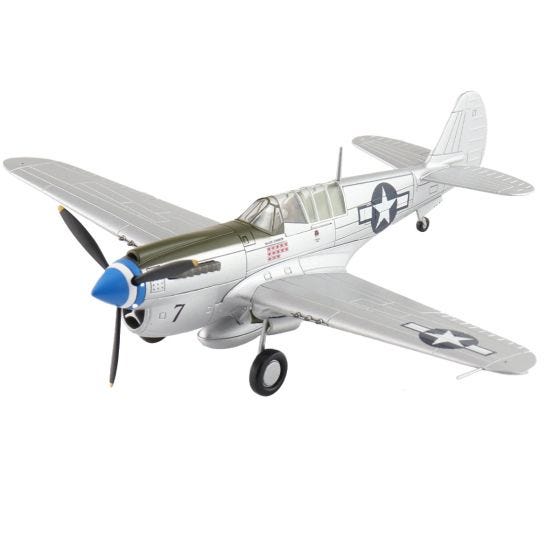P-40N Warhawk “49th FG” Die-Cast Model

In stock
Backordered
One of the most highly regarded and successful aircraft of WWII, the Curtiss-Wright P-40 Warhawk was made famous by Squadrons like the Flying Tigers.
First flown in October of 1938, the Warhawk was a single-engine, full-metal design modified from the predecessor P-36 Hawk. Becoming operational in the early 1940s, it was the third most widely produced fighter to serve in the conflict, with 13,700 manufactured in just five years. Complimented by pilots for its jack-of-all-trades flight envelope, it would be assigned to numerous attachments around the world. Taking on some of the toughest adversaries, it proved worthy of battle and created an undying legacy.
Stunning and precisely detailed, this model features:
- An authentic paint scheme, engraved panel lines, printed decals, antennas, and surface details
- Includes deployed or retracted landing gear and display stand to show the aircraft in flight
- Opening canopy with pilot figurine which can be placed inside
- Measures 5.5”l with a 6.25” wingspan at 1:72 scale
- Highly collectable and officially licensed
History and Specifications:
Powered by the Alison V-1710 liquid-cooled engine, the P-40 had access to over 1,200 hp and weighed less than many contemporaries, but was not excellent at high-altitude. What the Warhawk did have though was excellent handling, high dive speed, and a durable airframe that resisted high-G maneuvers. It was touted by many pilots as having little to no vices, providing adequate performance in nearly any situation. Making use of these attributes, the P-40 had the firepower to back it up, with a set of three 0.50 caliber machine guns in each wing which were devastating to opponents. Flown by Commander Gerald R. Johnson, the fourth ranked fighter ace of WWII, this P-40N Warhawk served in the 49th Fighter Group over New Guinea and Port Moresby during the 1940s. Attempting to stall the movement of Japanese forces, their crews targeted enemy installations and supply lines on the Buna trail and participated in the Battle of the Bismarck Sea, allowing the Allied forces to retake New Guinea by the end of 1943.

